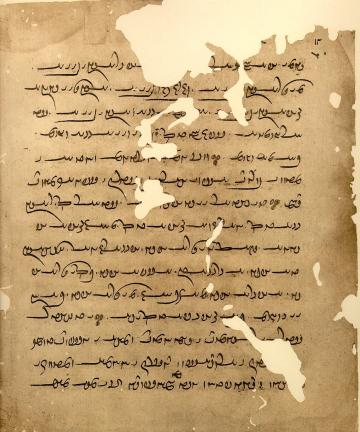Right now, the biggest task I am working on is learning basic words and pronunciation in Portuguese. I have learned a lot of vocabulary like greetings, question words, numbers, and months. The general structure of our meetings has been that we’ll talk a little bit about Brazilian culture or geography, and then we’ll review concepts that we’ve gone over, particularly because I’ll forget the pronunciation the first couple times I say something. I usually have my partner pronounce things a couple times too and we volley back and forth different variations of the words until we settle on how best it will sound in my accent. There are some sounds that I simply cannot pronounce or words that it feels like I cannot move my mouth around enough to get through.
Our lessons so far have been pretty unstructured because we will move from topic to topic as it comes up in conversation. We’ll work through each topic extensively, however, and return to them regularly. It’s a strategy where I don’t realize how much I have learned until I am stringing together very simple sentences, filling in the blanks, or something clicks about a certain concept.
Some of the feedback on my learning plan was that it was too extensive. I would probably agree about that because I see how long it takes to, firstly, go over a concept and then work to actually remember it. It definitely feels overwhelming at times, but I have to remind myself that I am just starting out and I would need to be completely immersed to learn a language at an extreme pace. The slow pace can also be more meticulous, and I know is making me better at pronunciation.
I think that because my language partner has never formally taught Portuguese, we are both trying to figure out what works best for us with her delivering information and me receiving it as well as suggesting other topics I am interested in. It can be difficult for her to explain things sometimes because she is a native speaker and just knows (or was taught from a young age) certain things about Brazilian grammar and pronunciation. We have been using google images a lot so she can show me what she’s talking about or find examples that make sense to her, which help her to be able to then explain it to me.
Moving forward, we are excited to do a movie night with a Brazilian movie. My language partner also sent me a playlist of songs in Portuguese that I am excited to explore more. I am looking forward to these artistic endeavors because I think it will be a great way to gain insight into Brazilian culture, begin to further recognize the cadence of Brazilian Portuguese, and hear some of the words I have learned. When I listened to one of the songs, I was surprised by how much I recognized or at least sounded familiar. Overall, I can’t wait to keep moving forward!


